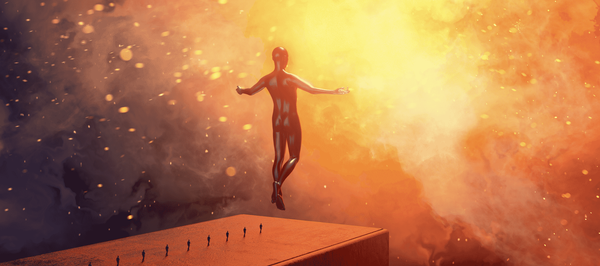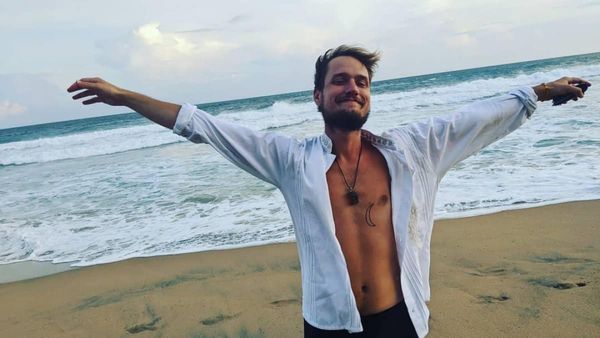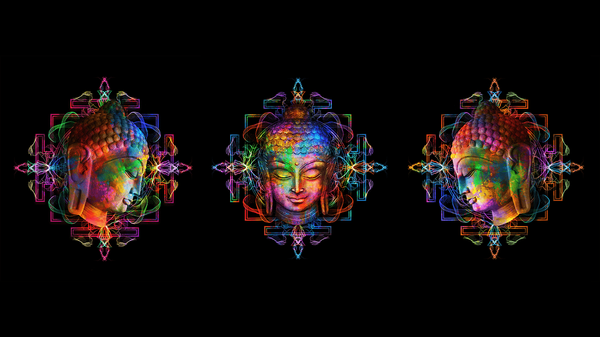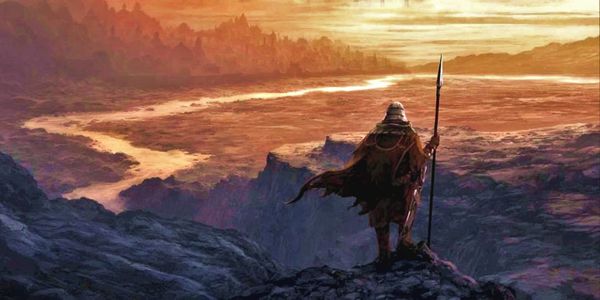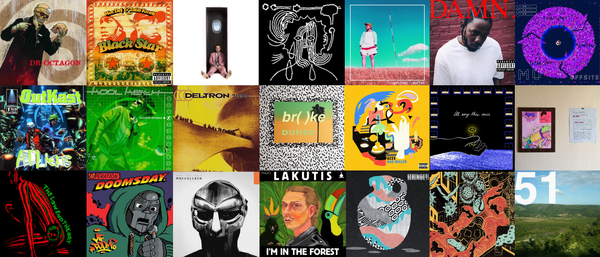Andy Dilks • • 6 min read
Carl Jung and the Artistic Impulse: Madness in the Creative Spirit
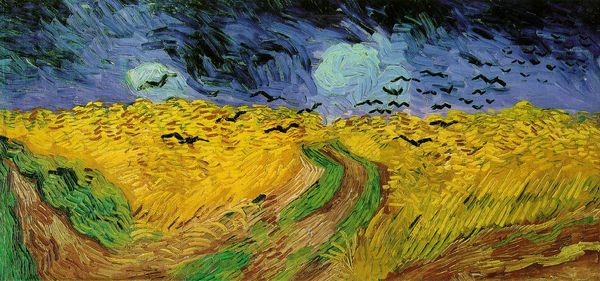
A brief look at some historical examples of artistic geniuses and it is tempting to believe that there is something approaching madness in the creative spirit.
The artistic impulse permeates throughout history: from the “primitive” cave art of the Upper Palaeolithic through to the introduction of perspective and foreshortening during the Renaissance, rules which would later be subverted beyond recognition by the artists of modernity, who sought to express new ways of seeing and ushered in an era of visual experimentation. Either as creators or consumers, art remains ever-present in the modern world, both a vehicle for expressing our innermost thoughts and desires and a medium through which we can escape into new realities and emotions.
What is it that leads us to create art? Is there a psychological drive at work, a subconscious force which simmers away beneath the surface before emerging in an explosion of creativity? Is there an innermost essence to this process, something which embodies our propensity to express ourselves through art?
A brief look at some historical examples of artistic geniuses and it is tempting to believe that there is something approaching madness in the creative spirit; that art is intrinsically bound with insanity, great works of art functioning as a cathartic mechanism – something which both purges and purifies the spirit – without which the artist would be confined to the asylum. The fascination of the link between mental illness and creativity emerged in the late 19th century and remains with us to this day, where heightened creativity can be seen to correlate with states of mind such as hypomania – a state of mind today most commonly associated with bipolar disorder – where inspiration emerges from the fluctuations between euphoria and depression.
The Artist as an Outsider
Vincent van Gogh is perhaps the most celebrated example of the “mad artistic genius”, a man who was frequently cited by art historians as suffering from manic depression and who revealed through his letters to have questioned his own sanity. In and out of institutions for much of his adult life, the root cause of van Gogh’s mental state has been hotly debated, with porphyria, schizophrenia, tertiary syphilis, lead poisoning and addiction to absinthe among the possible explanations (Manet, Degas and Toulouse-Lautrec were among other artists with a fondness for absinthe, as were a number of writers during the late 19th century. German poet Rainer Maria Rilke once wrote, “He saw his glass of absinthe grow and grow until he felt himself in the centre of its opal light, weightless, completely dissolved in this strange atmosphere.” There is something to be said for the role played by mind-altering drugs in promoting the drive to create art).
Whatever the causes of van Gogh’s mental state, his work seems to reflect a fluctuation between normality and insanity, as if the swirls of colour function as a measure of his grip on reality. Van Gogh said himself, “It is only too true that a lot of artists are mentally ill – it’s a life which, to put it mildly, makes one an outsider. I’m all right when I completely immerse myself in work, but I’ll always remain half crazy.” He would eventually end his life by shooting himself in the chest in the field where he had recently painted Wheatfield with Crows, an image which seemed to presage his suicide.
Psychologist Carl Jung considered the psychological roots of artistic creation in the modern world in a number of essays and lectures collected in the book, The Spirit in Man, Art and Literature. How did we progress from our primitive state, in which Jung perceived art, science and religion coalescing in “the undifferentiated chaos of the magical mentality” to the cultural and artistic climate familiar in the modern world? In what manner does art – and its symbolic content – reflect the seemingly tumultuous psychological nature of the artist? Can the art be used to decode the artist?
The Creative Impulse
Jung believed that art itself had no inherent meaning, suggesting that perhaps it is like nature – something that simply “is”. But the creative process was something distinct, and Jung posited that works of art could be seen to arise out of much the same psychological conditions as a neurosis. Like all neuroses these conscious contents have an unconscious background which in their artistic manifestation often go beyond the individual and into something deeper and more broadly reflective of humankind. Jung offered the analogy that “personal causes have as much or as little to do with a work of art as the soil with the plant that springs from it.” True art is something “supra-personal”, a force which has “escaped from the limitations of the personal and has soared beyond the personal concerns of its creator.”
Jung concedes that not all art originates in this manner – art can derive from a deliberate process of conscious, careful consideration geared towards a specific expression in which the artist is at one with the creative process. But for Jung, fascination lay in the artist who obeyed alien impulses where the work appears to impose itself on the author; an external force wielding the artist like a marionette. This is the creative impulse, acting upon the conscious mind from a subconscious level – it guides the artist in a way which they cannot understand, regardless of the conviction they may have that it has originated within themselves.
For great artists, this impulse can be all-consuming. As Jung rightly observes, “The biographies of great artists make it abundantly clear that the creative urge is often so imperious that it battens onto their humanity and yokes everything to the service of the work, even at the cost of ordinary health and human happiness”. The biographies of the likes of Beethoven, Marcel Proust and many others are a testament to the creative process as “a living thing implanted in the human psyche.”
For Beethoven, composing was a compulsion, as his prodigious output testifies – indeed, gripped in the vice of depression later in life, not least on account of his profound deafness, his work arguably reaching its zenith with the sublime late string quartets. Proust too felt irresistibly compelled to write – consigned to his bed on account of increasing illness, he worked tirelessly for several years on his opus In Search of Lost Time, a labyrinthine novel which tackles the nebulous quality of memory and love and the absurdity of human nature; a dense yet hugely rewarding product of tireless obsession.
Speaking With A Thousand Voices
Jung believed that the autonomous nature of the creative impulse as something that operates outside of consciousness is reflected in the symbolic nature of art. Symbols are expressions of the unknown, intimating something beyond our powers of comprehension. Jung believed these were deeply rooted in history; primordial images from a sphere of unconscious mythology. The creative drive works on the artist so that these images are withdrawn from the collective unconscious and presents us with archetypal symbols. For Jung this was a truly powerful psychological phenomenon: “Whoever speaks in primordial images speaks with a thousand voices; he enthrals and overpowers, while at the same time he lifts the idea he is seeking to express out of the occasional and the transitory into the realm of the ever-enduring.”
Ultimately, Jung saw this process as one of great social significance, where conjured primordial images were “constantly at work educating the spirit of the age.” Visionary works of artistic expression become something transcendental, linking the unconscious and conscious, past and present. It is a force which operates beyond the rational and approaches the sublime and timeless – art which offers us “a revelation whose heights and depths are beyond our fathoming, or a vision of beauty which we can never put into words.”
Art, too, was a powerful tool for the individual to understand the nature of his or her subconsciousness. Jung frequently integrated it into his process of analytical psychology, encouraging his patients to draw and paint their dreams and use active imagination in which image and meaning were integrated, in order to unlock the symbolism at its core and come to terms with trauma and emotional distress. Jung was an artist himself and spent much of his life attempting to unify his understanding of spiritual and esoteric traditions – particularly Christianity, Gnosticism and alchemy – and his own unconscious into paintings and illustrations. While art and creativity as a method of therapy pre-date the work of Jung (indeed, they reside in the distant past of our shamanic origins), his contribution to function of art as therapy in the modern age is indisputable.
The art historian John E. Pfieffer said of hunter-gatherer cave art in his book The Creative Explosion:
“Nothing in the twentieth century can match the Upper Palaeolithic for its combination of art and setting, content and context. Nowhere in our lives are there comparable concentrations of modern art with a purpose, art in action, as contrasted with passive art hung in out-of-the-mainstream places designed solely for exhibition. The works in caves speak together, individual styles but with an underlying unity, singing in unison like a chorus of individual voices expressing collective feelings, collective goals. That is their special power.”
In this sense, contemporary art cannot truly be measured alongside art from the past – it resides in a different era, inspired by and reflecting the spirit of the times. If shamanic cave art can be seen to represent the emergence of a new type of consciousness in humanity intimately tied to the birth of spirituality, art today can be viewed as a coalescence of all that has come since and is yet to come. Or, as Jung expressed it: “All art intuitively apprehends coming changes in the collective unconsciousness.”

